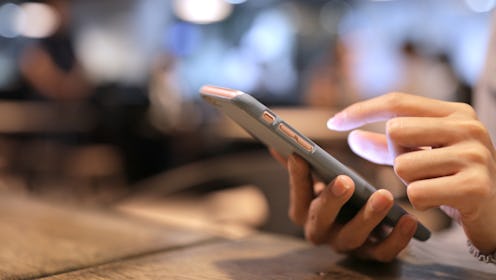Life
This Map Shows You What Your Neighborhood Would Look Like If A Nuclear Bomb Hit
I try very hard not to think about what my life will look like after devastating nuclear war, a feat best attempted by deleting the New York Times app from your phone, thus preventing panic-inducing alerts about North Korea and Trump tweets. Unfortunately, nuclear war is still a potentiality — if not because of the current political climate, then because nuclear weapons, you know, exist. And if you're morbidly curious and want to know just how many people would perish in a blast near you, this map will show you what your neighborhood will look like after a nuclear bomb hits.
As reported by Mashable, the map is the brainchild of the Outrider Foundation, a nonpartisan educational nonprofit that focuses on alerting the public to the impact of environmental disasters like climate change or nuclear war. The foundation implemented data from a "Nuke Map," created by Alex Wallerstein, a professor at Stevens Institute of Technology, which shows various impacts of different kinds of nuclear blasts. The Outrider Foundation's map, though, invites you to plug in your own address as the blast site. It's scary enough to see how devastating a bomb would be in a big city, but it's even scarier when you zero in on the damage in your neighborhood.
"We'd like to spread the word to as many people as possible, but we are speaking mostly to the average citizen, not nuclear policy experts, not politicians," Tara Drozdenko, the director of Outrider's Nuclear Policy & Nonproliferation program, told Mashable. "Outrider firmly believes that ordinary people need to be more involved in the national and international conversation about nuclear weapons. We are hoping to inspire morepeople to engage on this issue. We have additional resources on our website that outline what you as an individual can do about nuclear weapons."
It's a good move, since though Big Picture nuclear devastation isn't particularly fun to think about, it hits home a lot harder to picture the buildings, shops, and neighbors you see every day in post-nuclear apocalyptic spoliation. I live in New York City, and certainly a nuclear blast anywhere here would be catastrophic. According to the Atomic Archives, a blast in Midtown would instantly kill 75,000 people, with a blast wave taking down another 300,000, another 190,000 at risk of getting killed by debris, another 235,000 would die from the thermal pulse, and hundreds of thousands more will suffer the effects of radioactive fallout.
But according to the Outrider map, if the blast site were in my Brooklyn apartment building, 379,364 would die, with 844,617 suffering serious injuries. The Fireball would vaporize my immediate area, but the radiation would spread five square miles, the shock wave would hit 11 square miles, and intense heat, which would leave unprotected humans with severe and/or fatal third-degree burns, would encompass a 48 square miles, affecting Manhattanites as well as my Brooklyn neighbors. What an incredibly pleasant thing on which to ruminate!
If you truly are concerned about the potential of a blast, it never hurts to be prepared — the CDC has guidelines for what to do in the event of a nuclear attack. While the guidelines get incredibly specific, they are namely to find shelter immediately, and preferably in an area with no windows and little ventilation to prevent inhalation of the fallout cloud. From there, you should listen to the radio or the television for instructions from local authorities, which will either advise remaining in shelter or evacuation. For a complete list of the guidelines in potential situations you could be in following a nuclear blast, you can visit the CDC's website here.
